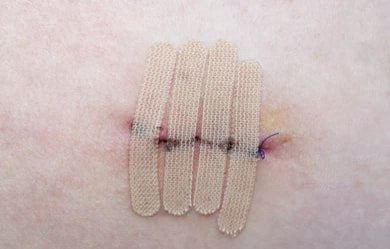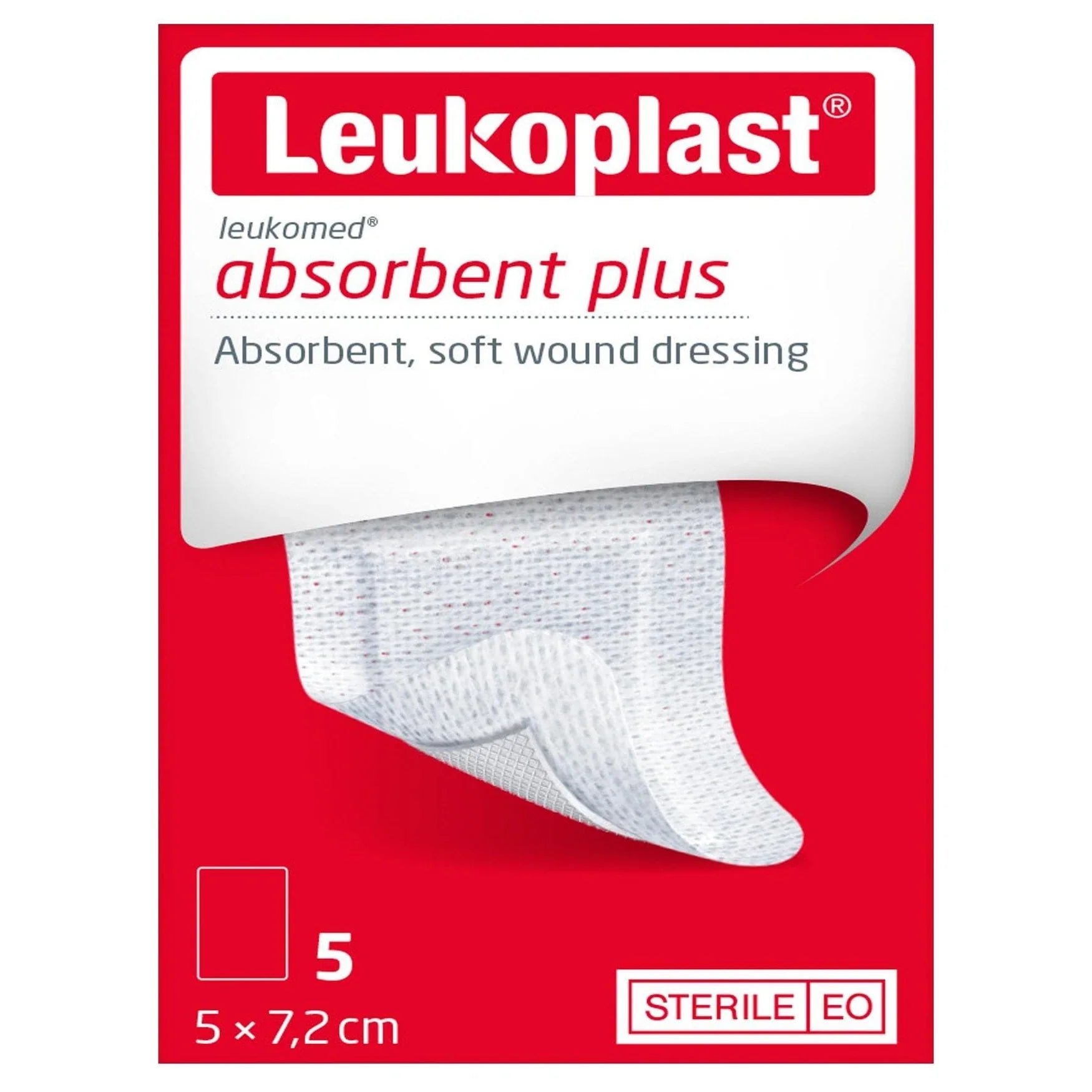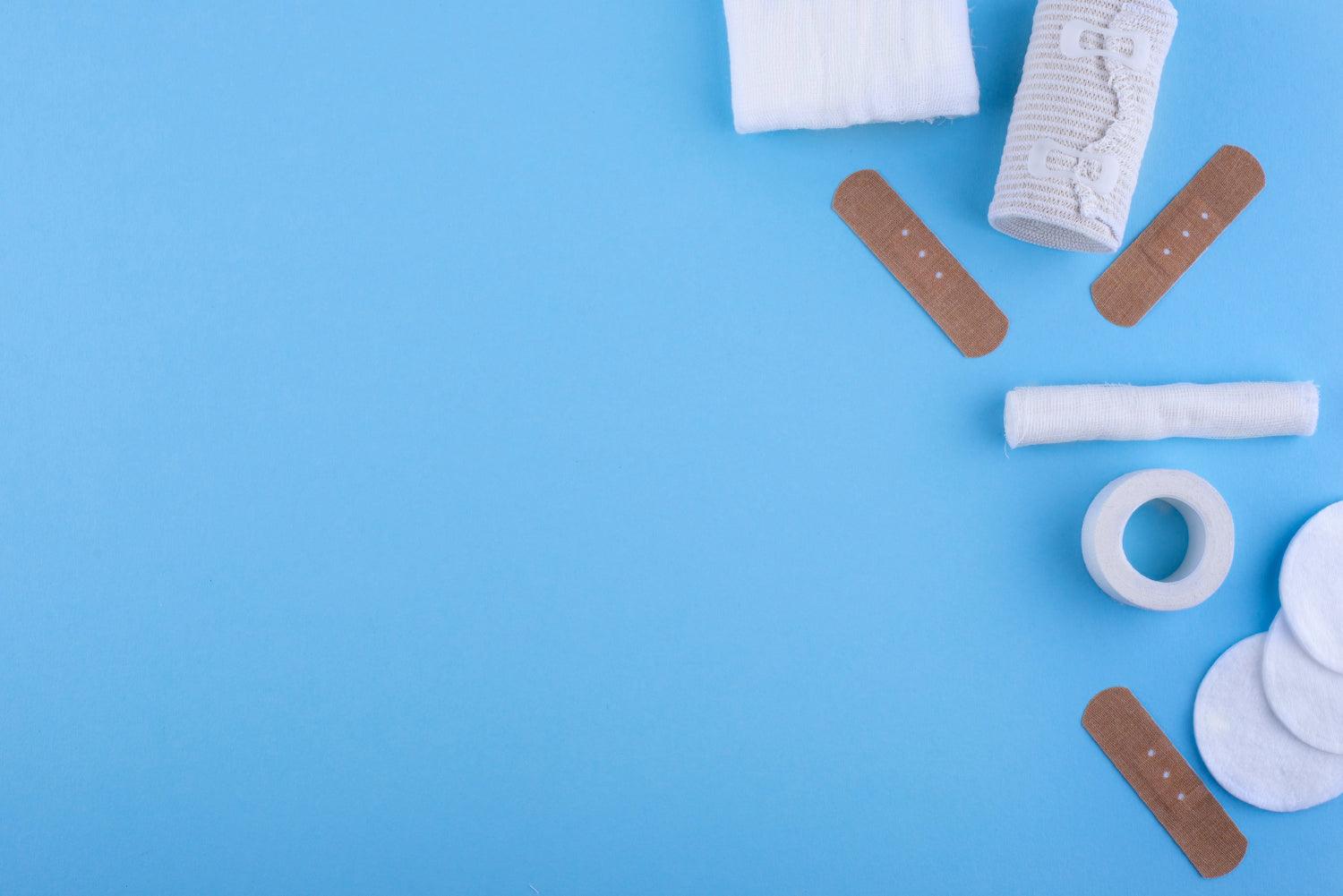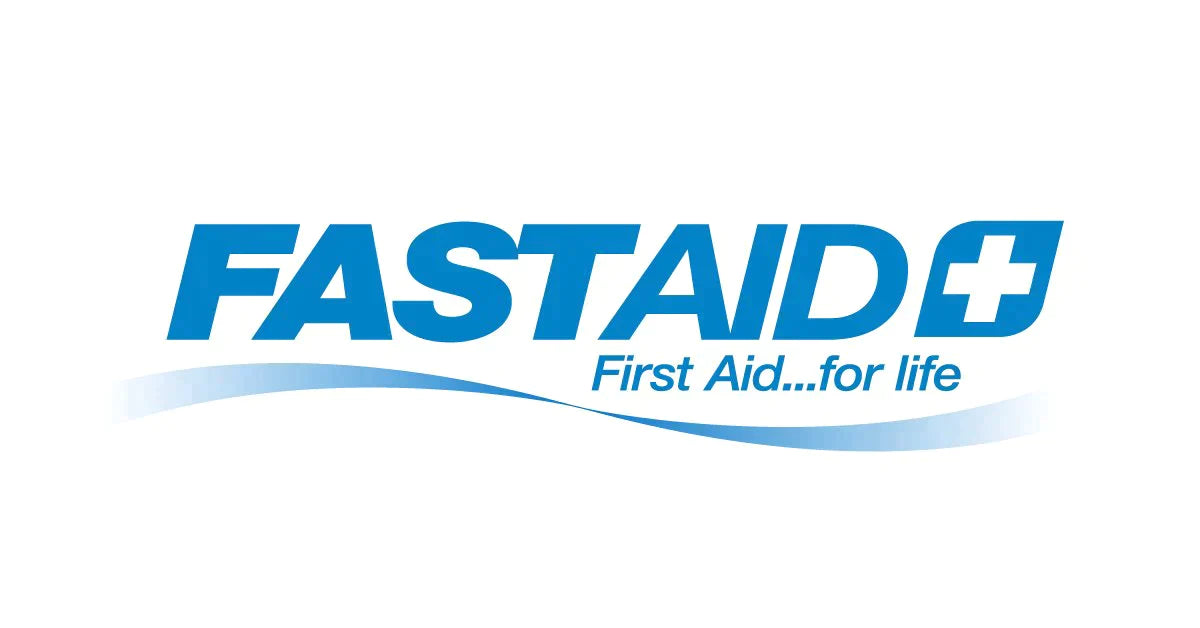
 Instagram
Instagram
Steri Strips: Application, Care, and Removal

Related products
Steri-Strips, or wound closure strips are dressings that consist of a piece of adhesive tape. Stitches are appreciated in the healthcare facility since they involve the use of sutures that provide non-invasive treatment and healing of minor cuts or surgical procedures. Initials in the history of utilisation were developed in the late 1950s by the 3M Company with help of Dr. George Winter and are growing in importance in wound care.
These thin adhesive bands have several functional purposes including closing the skin edges in the early stages of healing, again enhancing the speed of the process and final appearance of the skin scars. Application of Steri-strips goes on till they are shed off or are taken off by a healthcare professional; 7 to 14 days under regular conditions.
The steri-strips have to be kept absolutely dry for use, any little moisture is disastrous to their adhesive strength but gentle washing of the surrounding areas with mild soap is recommended as a way of avoiding infections as most doctors suggest.
Removal must also be done gradually; any hasty movement might cause discomfort to the patient or even affect newly developed tissues under this area The process of strip removal by healthcare providers is usually gradual over spanned duration rather than an instant peel-off.
NIH has published a study, which states that cleaning paediatric groyne wounds and closing it with SteriStrips tend to offer comparable aesthetic results to suturing by subcuticular method.
What Are Steri Strips?

Steri-Strips are narrow tapes applied chiefly on minor injury sites or surgical cuts. Designed as slender and elongated in terms of shape, these tapes’ primary function is to help the healing process of a particular wound in a gradual and gentle manner, through a thin and flexible strip of porous material with an hypoallergenic adhesive layer.
Hypodermic needles and these sterile’ bandages operate like minor sutures that are almost as efficient as sutures but in their inability to cause cuts on the skin. They stick on the skin peripheral to the small injuries or operations which involve joining skin margins together to minimise recovery time and prevent scar formation.
Moreover, they are helpful in the early stages of wound healing, specifically, they do not allow wounds to dehisce; besides, they help maintain the overall tissue quality during all the phases of repair processes, significantly decreasing the rate of infection, which is traditionally observed with staples or traditional sutures, according to numerous medical investigations, which investigated similar topics and contexts, further proving the benefits availability factors of steri-strips in today’s diverse and
Appropriate application of Steri-Strips entails the use of the product on fresh skin; once applied, they stay on the patient for seven to fourteen days depending on several factors before they naturally come off usually due to the skin’s shedding activities that are happening constantly at the subdermal level that partially contributes towards the process of gradual stripping of the strips post application and before the point of final removal safely occurs henceforth.
There are advantages as to why Steri-strips should be preferred for instance; it is less painful to the patient as compared to other methods, there is early discharge in outpatient facilities and it gives excellent aesthetic results. Their prolonged dependability has thus seen them being used all over the globe placing high reliance and making them a popular product among medical personnel who enhance positive characteristics towards the patient’s recovery.
When are Steri-Strips used?
Steri-Strips are mainly employed in skin wound closures whose injuries are small cuts, light lash lacerations, or surgical operations and help with advancing wound healing procedures more than any other category of the Steri-Strip product. It is quite essential in cases where wound margins are sharp, the skin is not shredded or the wound edges smashed.
Besides this core duty, Steri-Strips are also prominently employed in the post-operative process since they help to hold dressings on surgical incisions right after operations, a measure meant to avoid early re-opening of wounds by movements.
Furthermore, medical professionals often advocate for the application of Steri-Strips on deeper wounds that have already been sutured: such strips help in offering supplementary support once an affected area is healing since tension across newly developing tissues underneath skin layers is thus minimised. Thus, such benefits as less scarring during patients’ complete recovery, shorter hospital stays along with enhanced patient satisfaction indicatively explain why such interventions are being adopted by healthcare professionals across the world.
How To Apply Steri Strips
Steri-Strips are rather easy to apply; however, it is essential to do it as precisely as possible to achieve the best outcome in the wound healing process. Here's an easy step-by-step guide on applying these wound closure strips:Here's an easy step-by-step guide on applying these wound closure strips:
- Start by Cleansing: Before the use of the plaster, the area surrounding the wound should be washed with mild soap or antiseptic wash to remove any dirt and bacteria.
- Dry Skin Properly: After washing one should ensure they dry the skin well as the steri-strips bond well on to a dry surface not the wet one.
- Open Strip Packaging: Continue by taking some measures to unmask the already sterile packaged strip, which exists as the tool used in the operation duration, adequately adhering to hygienic practices at all times.
- Position Strips Correctly Over Wound Area: Place the first steri-strip on one side of the cut but ensure that the strip is not right up against the open wound point. This fixes it well, making it to cover well without exerting much force that would cause strenuous feelings that characterise the recovery phase.
- Repeat Strip Application: Further to that stick on additional strips of the same material when needed, making sure that there is equal space between the applied strip.
- Apply Pressure Gently Over Strips: After all the firmly adhered steri strips are positioned, it is advisable to apply moderate pressure on the upper aspects of the device in order to enhance the yield of the steri strip adhesion.
The process is then complete and Steri-Strips act as a secure guard around wound areas helping enhance healing periods that are largely characterised by seven-to-fourteen-day cycles before the wounds get to the expected completion stages that occur naturally with time as it just passes by without much complications or stress attached.
How to care for Steri-Strips

Caring for Steri-Strips requires proper attention and meticulousness to ensure optimal results. Here are some of the Dos and Don'ts:
Dos:
- Keep Dry: It can then be suggested that steri-strips be left in a dry state as far as it is possible until the strips start to come off easily.
- Clean Surrounding Area: It is also important to wash around areas where mild soap is being used but ensure that water does not get to the strips during this process.
- Regular Inspection: Examine the wound under the sections of the bandage or area where three stripes would be there for redness or swelling which should call for further consultation with a doctor.
- Perform only activities that do not apply pressure to the steri strip area to avoid its detachment before the expected time. In general, natural shedding occurs one to two weeks after the application of the procedure. Therefore, it is most prudent to preserve intense actions, mind the movement, and foster a slow learning pace during these critical days for the best results regarding rehabilitation.
Don'ts:
- Avoid Picking: It is strongly advised to never attempt to remove steri strips early because if left to possibly drop off independently, the healing results are likely to be far better.
- Refrain from Scratching: It is also recommended not to scratch even when there is formation of Itch in the area of injuries as it may cause a lot of harm to the healing process.
- Avoid Chemical Products: One should not apply any creams, lotions or ointments on the strips as doing so may compromise the stickiness of the strips and the time it takes to heal.
- Limit Sun Exposure: It is also advisable to avoid direct sunlight on the wound area because; much exposure to sunlight shortens the period for which the strip adhesive is effective because it weakens the adhesive.
In this way, those people who use steri-strip guarantee that the healing process is as positive as possible, excluding such threats as infection or the unwanted reopening of a wound and, at the same time, making people’s health and well-being better in the long run as the result of each effectively performed therapeutic action in practice.
How To Remove
Steri strips are external medical tapes which are employed mostly for skin stapling or to close small wounds and operation cuts. However, this knowledge of when and how to do it is still paramount if healing is to occur in the right manner.
Wait for the Right Time
Typically, steri Strips start lifting at the ends after a few days or stay on up until ten days post-application depending upon wound severity. It's important not to rush removal unless they're dirty or causing discomfort.
Assess Healing Progression
Examine this region once a day to check for infection-related signs such as erythema, edema, or worsening pain; inform your doctor if any of these symptoms appear.
Cleanse Gently
Before applying the steri strip, wash the hands well with soap then rinse it under warm running water; Do not put on lotion/ cream/ oil on the area where the steri strip is going to be placed as this defeats the purpose of the adhesive. Use a clean piece of cotton on lukewarm water to clean around the edges; do not dip the strips into water as this will disturb sutures/wounds.
Begin Removal Process
Start by where initial opening with the use of a sanitised pair of tweezers was made, ensure only loosen the strand enough to have a firm grip and not remove the strip entirely, this is because it causes crashing and reopening of healed areas of a wound or incision that the steri strip was placed on mainly due to the tight grip of the strip.
Peel Slowly & Carefully
Lift carefully pulling in a direction away from the wound rather than cutting up to the skin surface helps avoid unnecessary stress to freshly repaired tissues, thus avoiding scarring whilst promoting as much comfort as attainable in the process, the manner in which one removes a Band-Aid is done in a smooth, unpeeling movement which reduces the probability of tissue stress due to forceful movements.
If it is too stuck and multiple attempts are futile, consult a qualified health professional instead of forcing out the greater risks and complications, still confused, consult a physician for further advice. Finally remember, patience is paramount in the healing process which is a very significant component of the healing process.
When To Seek Medical Care
Understanding when it becomes essential to seek medical care is crucial in preserving health, preventing complications, and ensuring timely treatment. Indeed, certain symptoms must prompt immediate contact with a healthcare professional for appropriate evaluation.
Persistent Unexplained Pain
Suffering from the pain that does not improve or worsen over time necessitates an instant visit to the doctor's office or closest urgent care centre. It signals either an acute injury manifestation or chronic condition onset which needs assessment by professionals.
Difficulty Breathing
Experiencing laboured breaths often indicates serious conditions such as asthma attacks, heart disease manifestations, and lung disorders like pneumonia—thus warrants urgent attention from healthcare providers without delay.
Uncontrolled Bleeding
Continuous bleeding despite pressure application on the wound suggests vascular compromise and requires emergent intervention; left untreated might lead to severe blood loss, possibly life-threatening consequences.
High Fever With Confusion/Severe Headache/Sensitivity To Light
High-grade fevers accompanied by these neurological symptoms suggest potential meningitis—a dangerous infection around the brain/spinal cord needing emergent medical consultation diagnostic tests immediately to determine the cause and initiate proper treatments.
Sudden Vision Changes
Suddenly seeing blurred images, double vision experiencing partial/total sight loss, any eye highly suggestive of ophthalmologic emergencies including retinal detachment stroke – demand immediate diagnosis management to prevent irreversible blindness.
Chest Discomfort
Chest discomfort lasts longer than a few minutes and recurs after rest shortness of breath and vomiting are signs of acute coronary syndrome -exemplified when you need to rush to the nearest emergency department right away to initiate lifesaving interventions.
Bottomline
Steri strips serve as a non-invasive alternative to traditional suturing methods used for minor wound or surgical incision closure. The essential part of steri strip care includes daily inspection for signs of infection such as increased pain, redness, or swelling. It is critical not to soak them completely during bathing activities; dabbing gently around the edges with a damp cloth suffices for hygiene maintenance.
Removal procedures ideally begin when they start lifting at ends after a few days up until a day depending upon the severity of underlying damage cautiously peeled off starting from the loosened end using sanitised tweezers and gentle tugging parallel direction avoiding abrupt pull-offs so no accidental reopening occurs beneath heals sections.
In cases where it sticks too firmly despite repeated attempts consultation with health professionals remains advisable before resorting to forceful actions increasing risk complication scenarios should improve patient outcomes significantly if adhered to thoroughly providing a balanced blend of self-care professional guidance.
Frequently Asked Questions
What is the best way to remove steri-strips?
Wait for them to lift or loosen naturally, typically a few days post-application depending on the severity of your wound or incision. Begin at one end using sanitised tweezers and peel slowly in a parallel direction towards the other side rather than upwards.
How do you take care of steri-strips?
Monitor daily for signs of infection such as redness, swelling, or increased pain; be gentle around it while bathing. Avoid soaking strips completely when cleaning the surrounding area with warm soapy water before pat-drying.
How to apply a Steri-Strip?
Clean and dry the affected area thoroughly then pull the skin apart slightly where the wound lies apply strips directly crossing over the gap ensuring the adhesive adheres securely without causing discomfort--repeat the process every couple millimetres along the length until fully covered.
How many days after surgery can I remove steri-strips?
Upon healthcare provider's advice usually allowed to start removing approximately 10 days following surgery if no complications are evident healing appears satisfactory steady progress will dictate the exact timing of final removal.
Can you use Vaseline to remove steri-strips?
Not recommended since petroleum jelly compromises adhesive properties making it less effective over time leading to premature detachment potential exposure underlying suture wounds.
When to remove the steri-strips C section?
Typically recommend waiting between 7–10 days period post caesarean section delivery to ensure the surgical site heals sufficiently before starting removal; however, always consult the obstetrician beforehand individual conditions might require a longer time frame optimal recovery benefits receiving professional guidance helps prevent unnecessary risks and uncertainties involved in self-care practices.





















 Rated Excellent by 14,617+ Reviews
Rated Excellent by 14,617+ Reviews